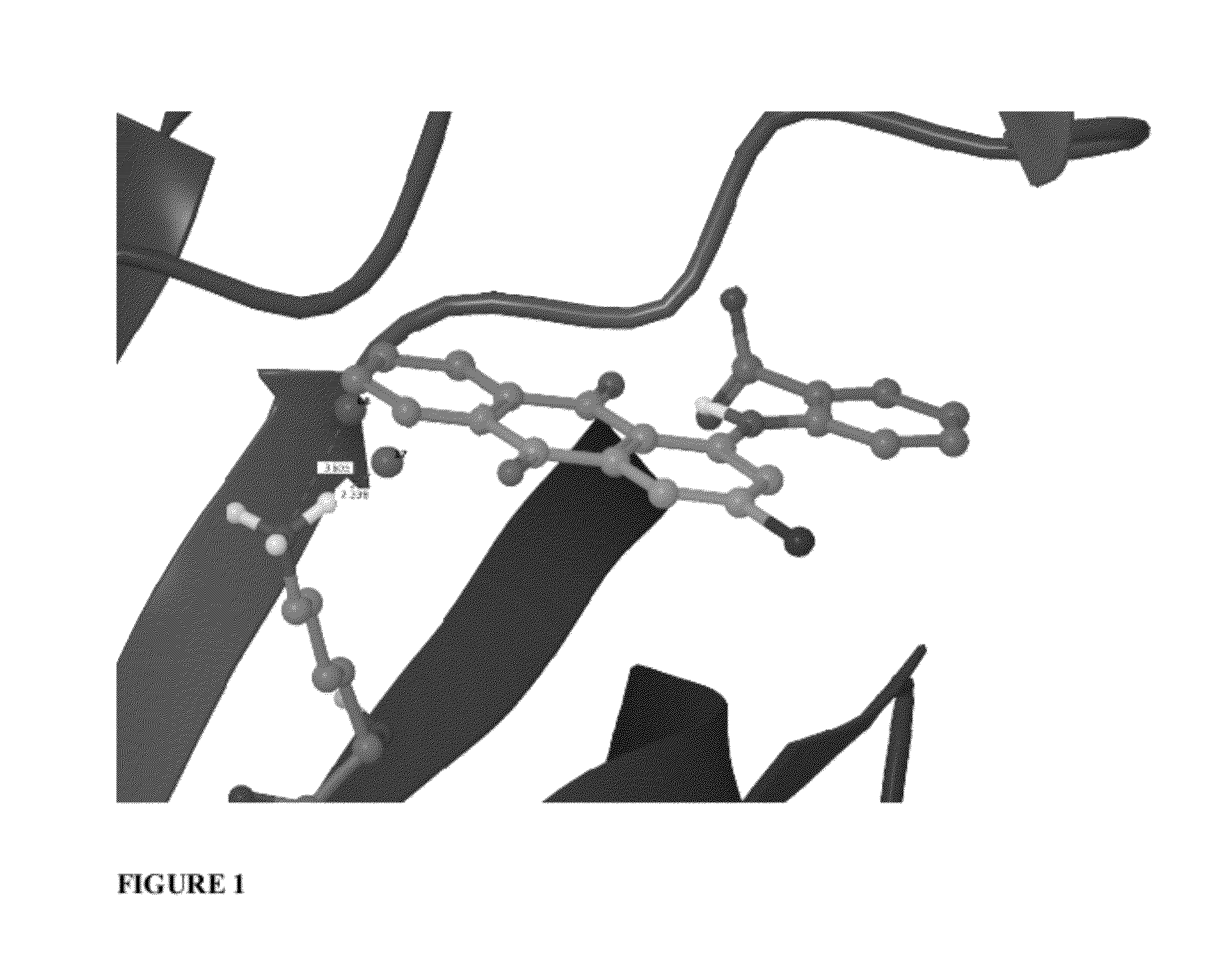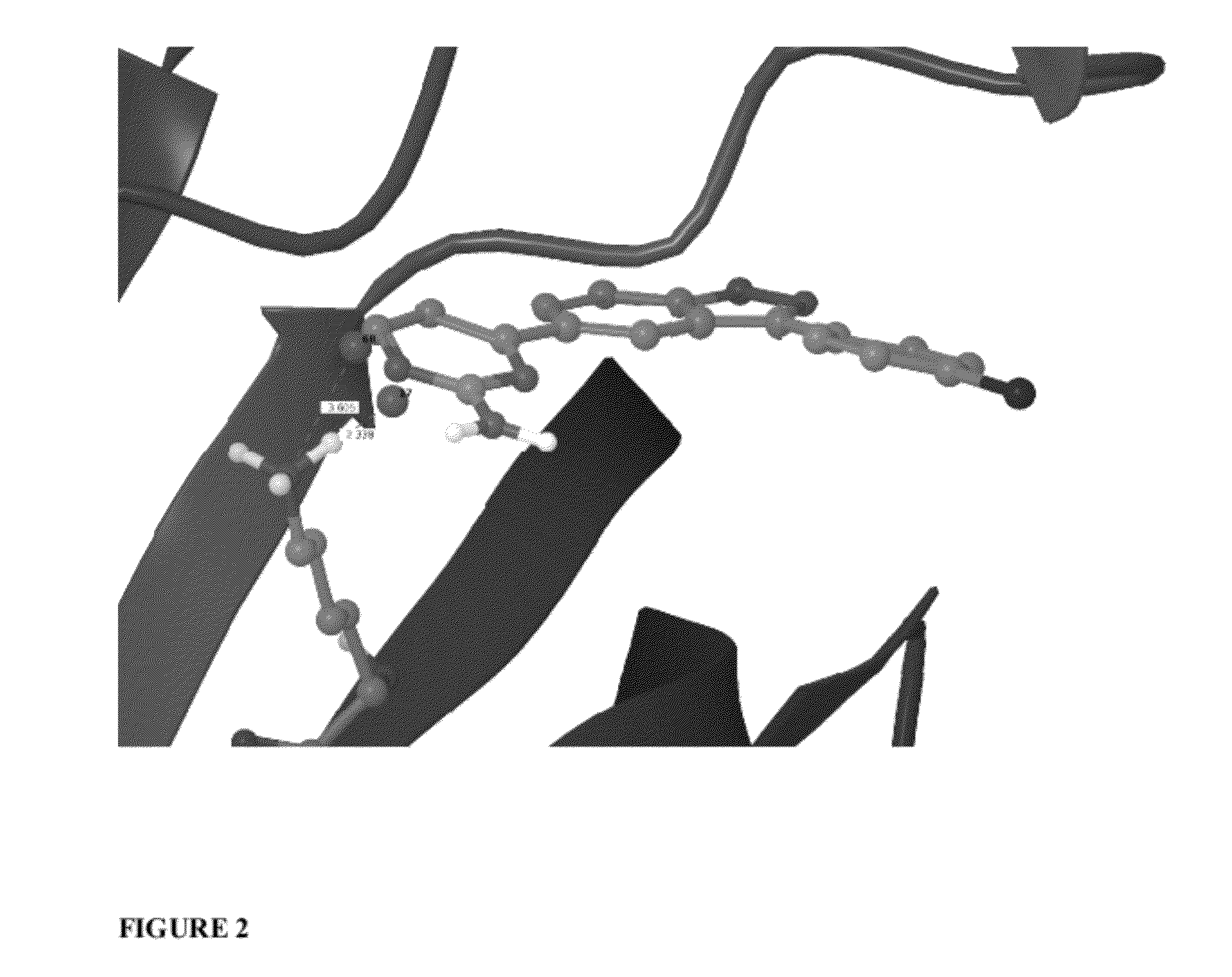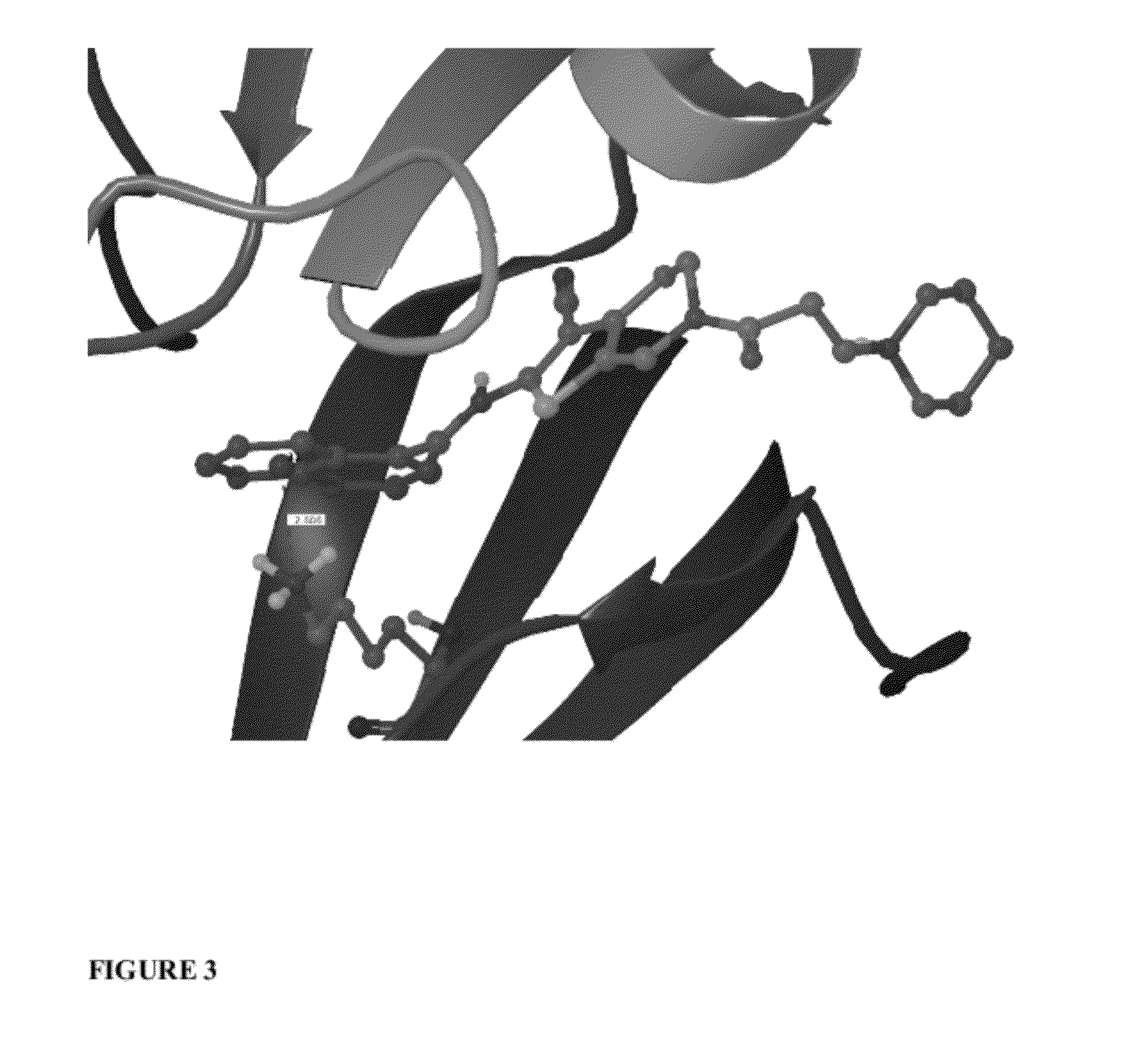Scoring Function Penalizing Compounds Which Desolvate Charged Protein Side Chains Structure
a charge protein and scoring function technology, applied in the field of binding affinity scoring function penalizing compounds, can solve problems such as difficult effective implementation, problematic scoring functions, etc., and achieve the effect of increasing energy
- Summary
- Abstract
- Description
- Claims
- Application Information
AI Technical Summary
Benefits of technology
Problems solved by technology
Method used
Image
Examples
Embodiment Construction
[0016]Practicing the invention begins with a receptor (or “target”, typically a protein) structure that has sufficient resolution to permit the use of computational software to “dock” a small molecule ligand into the correct position and orient it in the receptor active site cavity and to calculate a binding affinity of the ligand given this structure. Computer software programs that perform this task are referred to as “docking” programs.
[0017]A docking program typically carries out two distinct tasks to model receptor-ligand binding. First, a structure of a receptor-ligand complex is predicted by docking the ligand into the receptor structure. When this protocol fails to produce an accurate structure of the protein-ligand complex, use of a different structure of the receptor as a starting point is required. The problem of constructing alternative receptor structures that are modified to accept ligands requiring a substantial change in receptor conformation (“induced fit”) is a ver...
PUM
 Login to View More
Login to View More Abstract
Description
Claims
Application Information
 Login to View More
Login to View More - R&D
- Intellectual Property
- Life Sciences
- Materials
- Tech Scout
- Unparalleled Data Quality
- Higher Quality Content
- 60% Fewer Hallucinations
Browse by: Latest US Patents, China's latest patents, Technical Efficacy Thesaurus, Application Domain, Technology Topic, Popular Technical Reports.
© 2025 PatSnap. All rights reserved.Legal|Privacy policy|Modern Slavery Act Transparency Statement|Sitemap|About US| Contact US: help@patsnap.com



